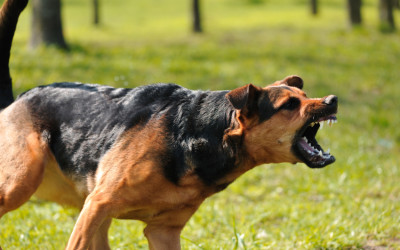Learn why we teach wait and stay, and why you should too! Usually when working with pet parents most don’t know or see a difference between the two cues stay and wait. When utilized and practiced correctly and with different rules, you can utilize both for different reasons. This will allow for a broader use for both commands in your every day life!
The way we describe the wait command is that it is a temporary pause to gather ourselves until released, usually a short duration. An example would be waiting before exiting the house to go on a walk or waiting to cross a street etc.
With wait you can also call your dog from the wait to come to you whereas in a proper stay, your dog should not move a muscle no matter what is said UNLESS they hear their release word (ex. Release, Free, Break etc).
Generally, when practicing wait, your dog should look to you and sit, then ask them to wait. The threshold of a door is a great place to practice. While maintaining eye contact, reward for the wait and then say “okay let’s go” as your release to walk through the threshold! If your dog gets up after you treat them, but before you release them, start over!
The stay command is more of a freeze in place until you’re released. This is usually a longer duration, like when we are asking our dog to sit and stay while we exit the room to grab something. They should be in the exact same spot as you left them in when you return.
When practicing stay, you’ll want to have your dog look, then either sit or lay down. Once your dog is in your desired position ask them to stay with a verbal stay and also a quickly put up your flat palm facing them (we don’t want to hold it up the whole time).
In the beginning we won’t be able to have distance between you and your dog, but we work up to that! Once you are ready, you can walk back to your dog to reward and then the most important part is the release! (the treat is NOT the release, use Release, Free, Break etc).
If your dog gets up and breaks the stay at any point during the practice before you release them, start over!
To wrap up, even though wait and stay are very similar, we find that by using each command for the proper behavior, it helps your dog understand the difference between the two, helps them perform better, and it allows you to perform way more tasks with your dog as the behaviors will transfer into your every day life.
Once your dog masters wait, they will start offering the behavior, like waiting for permission to walk through the front door, waiting to cross the street, waiting to greet people and dogs, etc. With stay, you could ask your dog to perform a down stay as you bring in the groceries from the car and want to leave the door open so you can go travel back and forth without the worry of them door dashing!
Even though both commands are similar, hopefully you will be motivated to try to practice both in different scenarios now that you know the difference!
Puppy Kindergarten – Group Puppy Training Classes Miami, Florida – AKC STAR Puppy
Applause Your Paws Canine Training Center - 4423 SW 74th Avenue, Miami FL 33155 786-529-RUFF (7833) | training@applauseyourpaws.com Congrats on your new puppy! Puppyhood is such an exciting (and adorable!) time. It's also a critical time for your dog to learn...
Rehabilitating Aggressive Dogs
At our canine training center located in Miami, Florida at 4423 SW 74th Avenue, Miami FL 33155, we have a unique opportunity re-socialize dogs who are, or who have become aggressive. The most common type of aggressive dogs we deal with are fear aggressive dogs and...
Miami Dog Training – Indoor Air Conditioned Dog Training Facility – Puppy Training Classes
"My puppy is driving me crazy! What should I do?!" The day you brought your puppy home everything was new and exciting. Those little puppy paws, those big puppy eyes, even that adorable puppy breath! Everything was going fine and dandy until the next morning when your...



